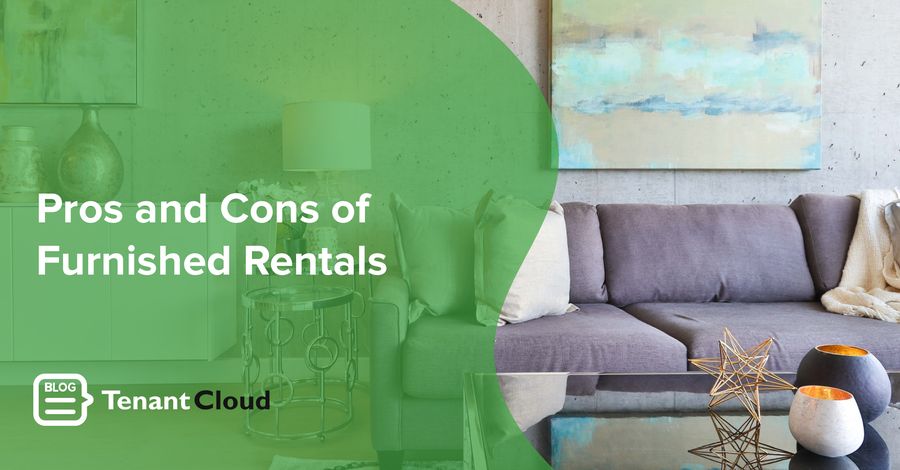First-time landlords often face the dilemma of whether to furnish their properties or not. There are tons of opinions on both sides of this question, and they often vary depending on location. In Florida, many people prefer fully furnished properties for the short term, while in the western states the preference is often empty rentals and long-term leases.
It's up to you to decide what is best for your investment, but here are some pros and cons of furnished rentals from a community of experienced professionals: landlords.

Pros of furnished rentals:
- The first and most obvious reason for furnishing is increased rent. Landlords can charge about $50 to $100 more in rent per week for a furnished apartment, depending on the location and quality of furnishings, which does seem like a good return on investment if the furnishing doesn't break the bank.
- Furnishing your rental properties is a great way to target a specific group of tenants. In particular, furnished rental properties appeal to people moving from a significant distance as well as young tenants renting their first apartment. For such groups, it is not an option to transport furniture cross-country.
- As an independent business owner, landlords can benefit from certain tax breaks and deductions. By choosing to furnish your rental property, you are investing in both capital improvements and consumable products necessary to your business, and the purchases can typically be deducted and depreciated as business costs.
- Often landlords don't have many options when it comes to staging. They either take pictures of whatever the current tenant has put in the apartment or display images of empty rooms. Neither of these make for great marketing. When you choose the furnishings, you also control your public image and make it neat, sweet, and cozy, so tenants want to live in your apartment. Nice visualizations are important to today's renters.
- It's remarkable how much damage moving furniture in and out of an apartment can cause to the structure. Whether it chips and dents the walls, causes carpet wear and tear, or scrapes tiles, moving furniture is a hazard. This happens when tenants move large pieces of furniture into a small apartment or try to arrange furniture for a nice layout. Many landlords who pre-furnish apartments find that property maintenance needs are greatly reduced, and that means reduced costs for you.
Cons of furnished rentals:
- As a landlord, you already have extensive cleaning responsibilities before your tenants move in. By adding furnishings to the mix, landlords also need to steam clean couches, check tables and chairs for damage, and decide what to keep, what to clean, and what to replace entirely. Many landlords simply aren't interested in taking this on.
- Some landlords are against furnishing their properties because they don't want to manage young first-time renters or short-term vacation rentals that can impinge upon space that could otherwise be occupied by a long-term tenant. By leaving properties unfurnished, landlords can narrow their potential rental search to those who have experience renting and are choosing a place to settle down.
- In some cases, unfurnished apartments simply rent more quickly, and then landlords find themselves having to store what furnishings they've purchased. While storage space for one apartment's furniture may not be a huge cost in the grand scheme of things, it can feel unnecessary and frustrating when landlords find themselves shelling out for garage space.
- Often people have their own furniture and do not want to be responsible for someone else's things. Also, everyone has their own personal style, and not everyone is going to like your decorating taste. If it's not simple or well-defined, it could turn away potential tenants.
If you are still hesitating between leaving your rentals bare or taking a risk and bringing in furniture, maybe the starting point will be to provide just the essentials. This strategy is not the worst, because it places some responsibility on the tenant, while also making it easier to move, if necessary, and increasing rental income. Landlords who provide a few lamps, a couch, and a table and chairs also cultivate goodwill on the part of their tenants, while still allowing tenants to make the space their own. The most important thing is to keep track of all your assets in a list.
Why Gen Z Renter Can Be Your Prospective Tenant: 4 Main Reasons You Should Think About
5 Landlord Tips How To Find Good Tenants For Your Rental Property
Advertise Rental Property For Free: Hands-on Approaches You Should Know







